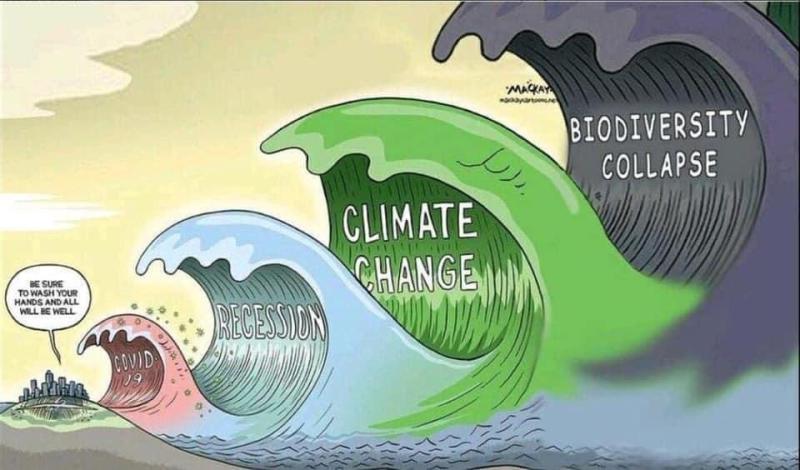
If you wonder why the title carries the number 15, rather than 26 – you’re excused.
While the relevance and criticality of COP26 is hammered home in the global media, the news reporting on COP15, as an effort possibly and reality more important than its Scottish climate conference peer, was rather subdued and unspectacular.
One of the reason may have been that the conference took place in Kunming, China – and factual, and critical reporting from China is often a not-too-easy task for global journalists.
Let’s therefore get the two most context-relevant questions straight out of the way: What is COP15? And why do we need two COPs (i.e. 15 and 26) anyway, more so as they take/took place nearly simultaneously?
What is COP15? And why are there two COPs?
To understand that, a little bit of climate and COP terminology and history is of relevance.
COP simply means ‘Conference of Parties’ and means the coming together of signatory parties (and therefore often also stakeholder) of a convention.
The COP26 in Glasgow is – fundamentally – the 26th meeting of countries that signed United Nations Framework Convention on Climate Change (UNFCCC), a treaty that came into force in 1994.
In a similar vain, COP15 in Kunming was the 15th meeting of countries that are signatories to the Convention on Biological Diversity (CBD), which was opened at the 1992 Rio Summit, and entered into force in 1993. COP1 on the CBD took however not place until 1994.
Today, all UN members, as well as many others, have signed the convention. With one noteworthy exception – how else could it be – the US (full signatory list).
Side note 1: There will be yet another COP15 in 2022! NamelyCOP15 of the Convention on Desertification (official name: UN Convention to combat desertification, UNCCD), and it will take place in Cote d’Ivoir.
Side note 2: COP’ed out …By now the reader will have figured out how – roughly – the mechanism of meetings for these conventions works. And indeed, for anyone interested in checking the full list there are a whopping 15 such multilateral environmental agreements. It is also rather unsurprising that many – if not all – of these have a link to climate. And all of them have a link to sustainable development.
What is the Convention of Biological Diversity (CBD)?
The CBD is a multilateral treaty. Its objective is to develop national strategies for the conservation and sustainable use of biological diversity, and it is often seen as the key document regarding sustainable development. The convention has three main goals:
- the conservation of biological diversity (or biodiversity);
- the sustainable use of its components; and
- the fair and equitable sharing of benefits arising from genetic resources.
2010 was a critical year for the convention when the Aichi Biodiversity Targets where defined, and subsequently published in the convention’s Strategic Plan for Biodiversity 2011-2020.
COP15: Purpose, Goals, (desired) Outcome
The bad news is: so far nothing decisive has come out of COP15.
There are a couple of reasons for that, the most important of which is the fact that the conference split into 2 parts – largely consequence of the Covid19 pandemic – and that the October 2021 meetings were but the first half. The 2nd part is schedule to take place April 2022.
The main purpose of COP15 is to adopt the post-2020 global biodiversity framework, the first draft of which is publicly available for review (more on the process and preparations: here).
COPP15, Kunming 2021 – Status Quo and temporary outcome
The positive news is: in regards to the overall framework there is by and large a lot of overlap among the signatories. Similar to the Paris Climate Agreement, a recovery route as per 2030 is envisioned in the currently discussed agreement version.
But, as the saying goes: the devil is in the detail.
First, the Aichi targets mentioned above have been missed. Not much of a surprise there – after all our global society does have a rather miserable track record when it comes to achieving targets of any global agreement however weak they may be.
Indeed the 2nd part of the conferences shapes up to be ‘make or break’ precisely consequence to these details – even if there is the knowledge that this opportunity must not be missed, and may potentially be ‘the last exit’ off the high-way of biodiversity catastrophe.
Specifically, aspects such as financing, implementation and benefit sharing needs – fundamental to rolling any efforts out on a global level and across geographies – remain sticky points. To the point that unless they can be resolved in the April conference round, the whole framework may fall flat on its face in this moment of time.
Stay tuned for how this political ‘school year’ 2021/22 is going to close come April ….
After all, as subdued the news reporting may have been on the October Kunming meeting – the stakes are just as high, possibly higher – than what we are make to believe those in Glasgow are.

